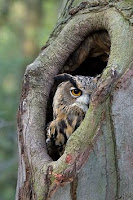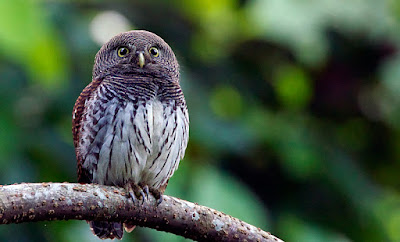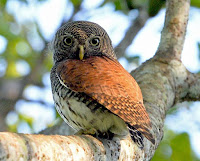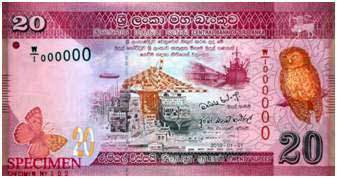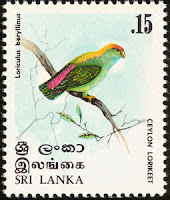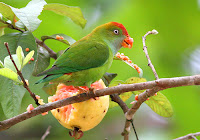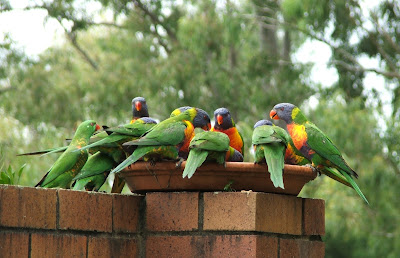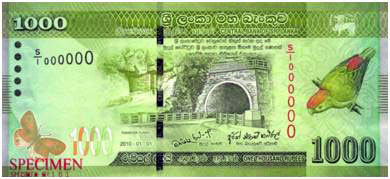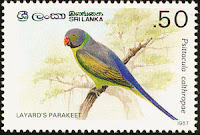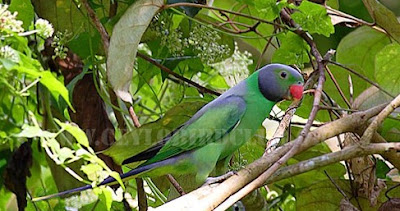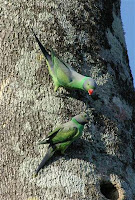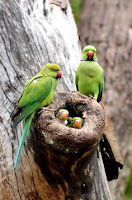Kandy, the last royal capital of Sri Lanka is a
major tourist destination. ( 115kM from Colombo at 465 meters above sea
level). Famous for the Temple of the Tooth and many other temples the
city could be called the cultural capital of the island.
Kandy Perahera, the pageant of the temple of tooth where
Buddha’s tooth is kept is held either in July or August each year to
parade the golden caskets is a must see itenary if one is visiting Sri
Lanka during these months. The final night procession is the most
spectacular event of the country. More than 50 elephants parade the city
accompanied by the drummers, dancers and chieftains.
he city established in the 15th century was the last
royal capital where 2500 years of royal rule ended. This bustling market
town is rich in cultural diversity has plenty of iteneries to offer to
the tourists from songs dances and handy crafts to ancient temples and
adventure activities. Kandy is a good transit point to the cultural
triangle to the north or hill country to the south. The city is also a
good source of souvenirs or to experience many cultural performances at
it’s various hotels in the city.
Lying 115 km from Colombo, Kandy is Sri Lanka’s second biggest city
and the capital of the central province. The busy town is situated in a
valley at an elevation of 600m, inside a wide loop of the Mahaweli River
and is surrounded by hills covered with tropical vegetation. Home to
the Sri Dalada Maligawa – the beautiful temple that houses the tooth
relic of Lord Buddha – Kandy is also a popular stop during July/August
when the annual Esala Perehera (holy festival) takes to the streets of
the city. The cool climate of the hills is a relief after the cloying
heat of the lowlands, and the lovely Kandy Lake and the drives around it
are set amidst great scenic beauty.
Kandy was a royal capital and the last stronghold of the Kandyan
kings against foreign power, holding out against them for about 300
years. The two main Buddhist Chapters are based here and formed the last
centre of independent Buddhist thought during colonial times. Much of
the town’s charm lies in the higgledy-piggledy arrangement of its small
shops. Many of the buildings are colonial and some are even older. Many
of Sri Lanka’s arts and crafts flourish here, particularly the silver
and brass crafts as well as jewellery in traditional designs. This
market town is also the economic focus of the surrounding tea-producing
central highlands.
Steeped in tradition and history, Kandy plays host to many thousands
who come to pay homage to the Sacred Tooth Relic, as it is taken in
procession around the city, in a magnificent golden casket placed on the
broad back of the Temple Tusker. The procession comprises over 100
caparisoned elephants, thousands of dancers, drummers, torchbearers and
whip crackers. This magnificent, centuries-old procession is probably
one of the oldest and most spectacular pageants in Asia.
The centrepiece of the town, Kandy Lake, is artificial and was
created in 1807 by Sri Wickrama Rajasinghe, last ruler of the Kingdom of
Kandy. You will also see the little island in the middle of the lake,
as you walk around. It used to be the King’s harem, but the more
uninspired British maintained it as an ammunition depot. There are many
walks you can take, such as up to the Royal Palace Park, and the
Udawattakelle sanctuary. Sri Lanka’s largest Botanical Gardens (covering
60 hectares) is 6kms away and is open daily.
The Temple of the Tooth dates back to 1687, and is said to contain
the Tooth Relic of the Buddha, which was smuggled into Sri Lanka in the
4th century BC, after the Buddha’s deth. An imposing pink structure, it
also houses a highly valued collection of Ola (palm) leaf manuscripts,
and is open daily from 6am – 4pm.among the many historic sites worth
visiting, are the Malwatte and Asgiriya Viharas (temples), the Embekke
Devale, and the Lankatilake and Gadaldeniya temples.
Thousands come here today to watch cricket at the International
stadium, and The Victoria Golf and Country Resort is a 40-minute drive
from Kandy. The town has everything from banks to cyber cafes, to
excellent libraries and bars and restaurants. Locals can even point you
in the direction of meditation centers. Accommodation ranges from luxury
hotels to middle range guesthouses, to budget lodgings. The regular bus
and train services of this extremely central town will connect you to
almost anywhere in the island.
The Temple of Tooth
The main attraction of the city and also the most sacred Buddhist
establishment in Sri Lanka is where one of Buddha’s tooth is being kept.
Built in the 16th century but improvements and additions have been done
to this structure until the fall of the Kandy kingdom. A golden canopy
was added recently. Daily rituals are being carried out at various
offering times to the shrine. A dress code applies for entering the
temple. The magnificence has been enhanced by the octagonal pavilion.
Hindu Shrines
Adjacent to the Temple of the tooth are three of the four major Hindu
shrines taking part in the Kandy Perahera. Shrines are dedicated to Gods
Vishnu and Natha and Goddess Patthini. The forth shrine is further
towards the town. Visitors to these shrines could witness the Hindu
religion customs though most of the worshipers today are Buddhists.
Hindu shrines taking part in the Buddhist pageant is a good example of
the Sinhala and Tamil co-existence that lasted for centuries. Four of
the last Sri Lankan kings were of south Indian origin.
Other Temples
Kandy is surrounded with many major Buddhist temples. On the shores of
the lake are Malwaththa and Asgiri temples. Fine painted murals of
Buddhist stories in these temple buildings are a good example of the
arts in the Kandy period while paintings of the Hindagala temple at
Peradeniya are of the 7th century.
The Old Royal Palace compound
Old place buildings are just beside the temple of the tooth. Among them
are the old royal palace, quarters of the royal concubines; queen’s
chambers the council chambers and the armoury. Some of these are now
being used as museums depicting the exhibits of the Kandyan era. The
council chambers built in 1784 is a unique example of wooden
architecture of the Kandyan period. The Kandyan Convention was signed
here ceding the country to the British in 1815.
Lankatilaka Temple
Lankatilake temple is a magnificent building built on rock at a scenic location which also has fine paintings.
Gadaladeniya Temple
This 14 century temple is situated about 15Km from the town. The
structure of the temple is influenced by the South Indian architecture
and built on a rock. The stupa is on a high stone platform.
The Royal Botanical Gardens
Once a pleasure gardens of a Kandyan Queen this 40ha land is a beautiful
park with numerous tropical foliage and the best in the island. The
Commander of the allied forces in Southeast Asia Earl Mountbatten had
the headquarters in the garden during the Second World War.
Embekke Temples
The main attraction is the intricate wooden carvings of this 14th
century shrine dedicated to God Kataragama. There is also a Buddhist
temple on location. Almost the entire structures of some wooden
buildings are decorated with dancers, musicians, wrestlers, legendary
beasts and birds. Nearby are the ruins of an ancient rest house with
similar pillars carved in stone.
Arts and Crafts
Kandy is synonymous with arts and crafts of Sri Lanka than anywhere else
in the country. It is probably because the Kandy is where all elite who
patronised these crafts survived during 300 years of war with the
Europeans. Kandy is probably the best place to buy most of the
handicrafts produced in Sri Lanka because there are number of shops
catering to the tourists. Tourists could watch local crafts coming into
life at the At the Kandyan Art Association.
At Kundasale, about 4km from Kandy, a village has been established
recently to settle local craftsmen and their families. Visitors could
watch craftmen at work and purchase their products on site.
